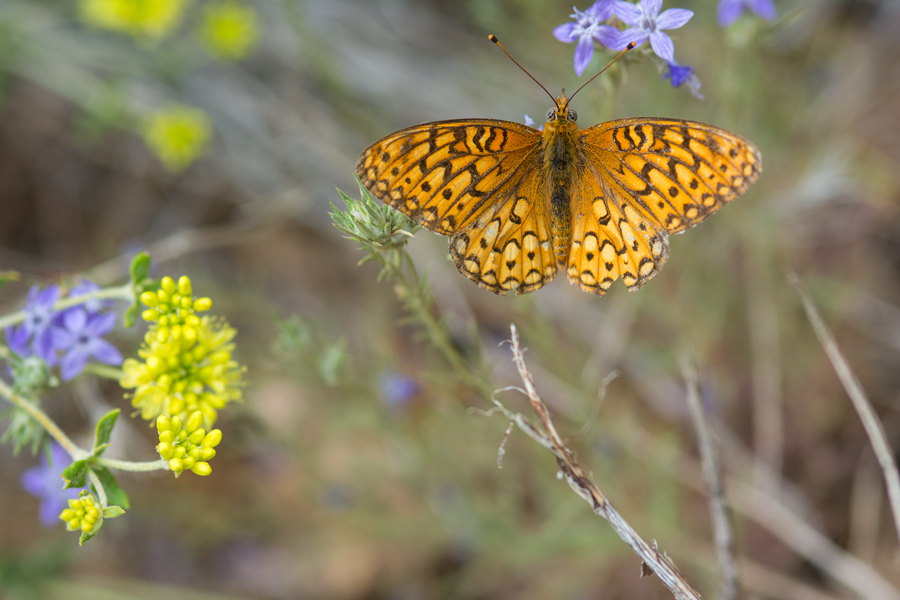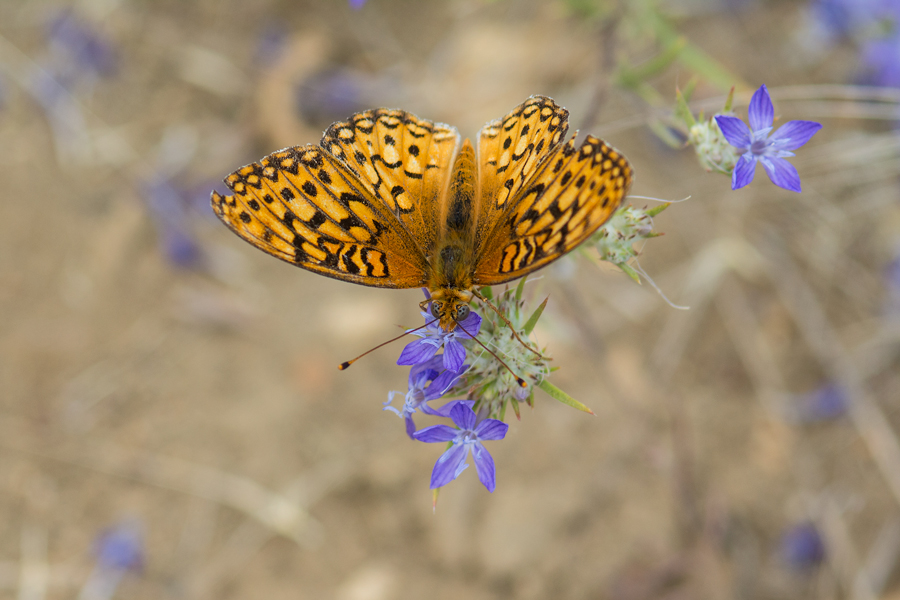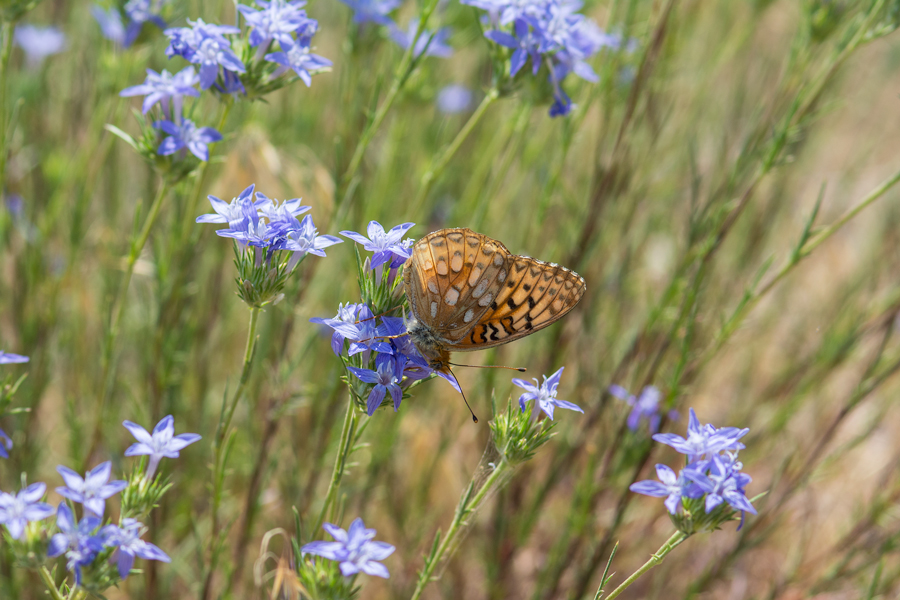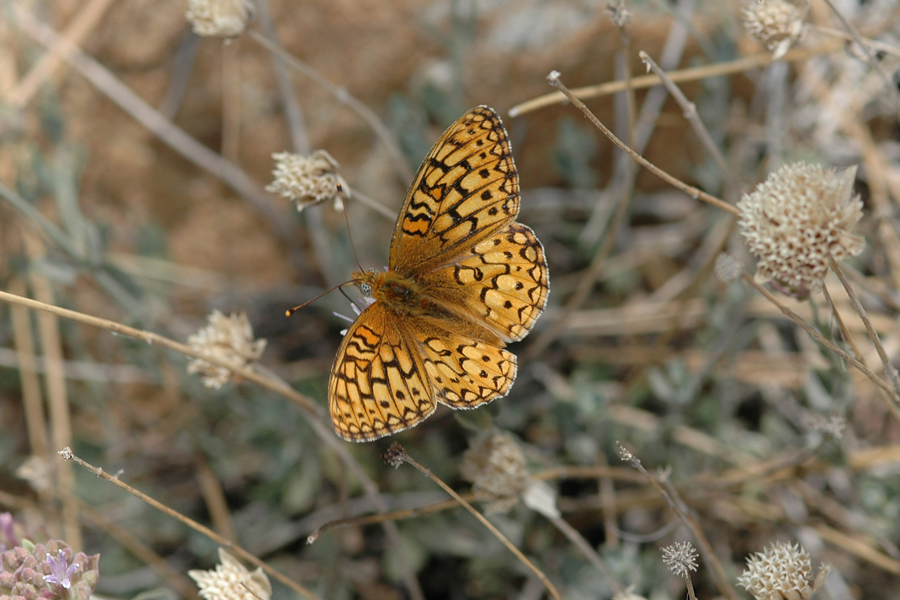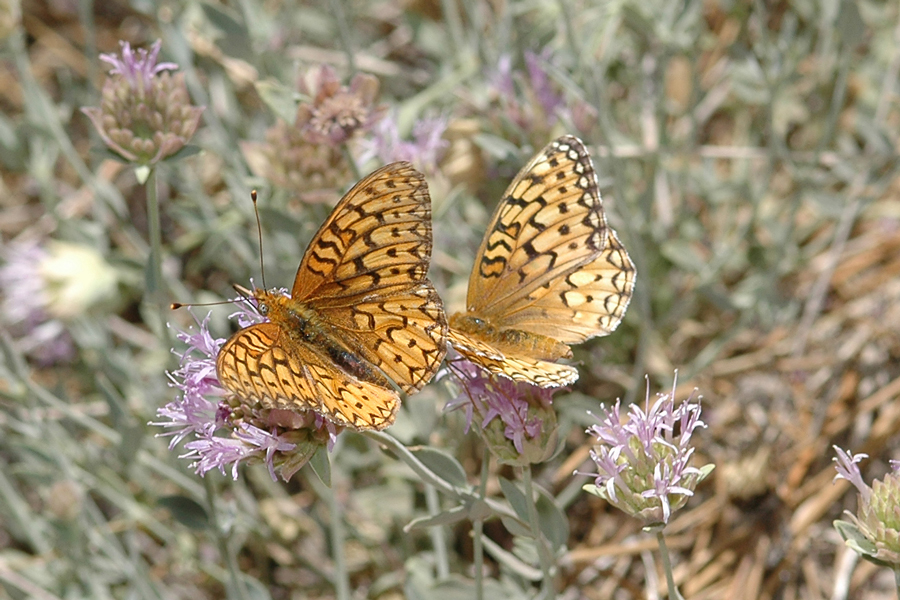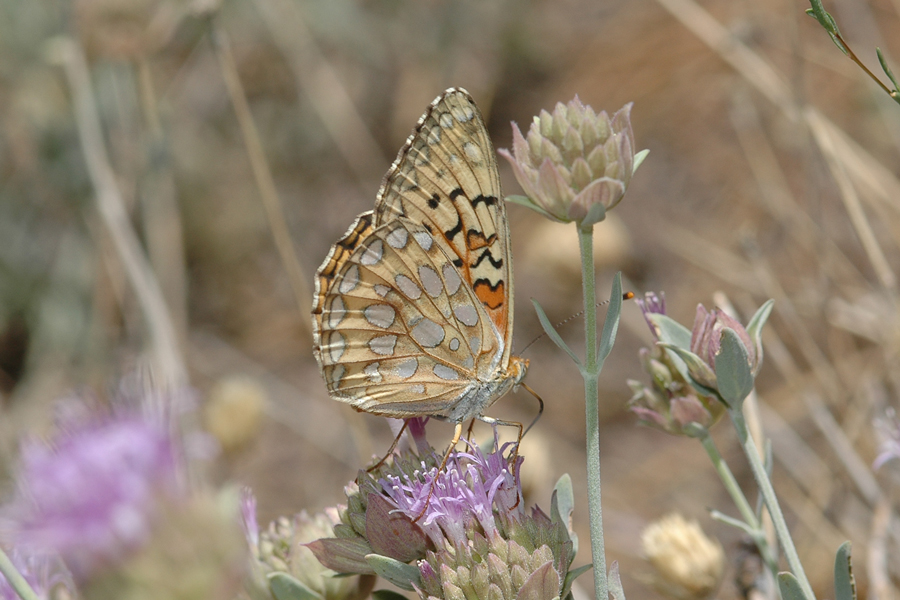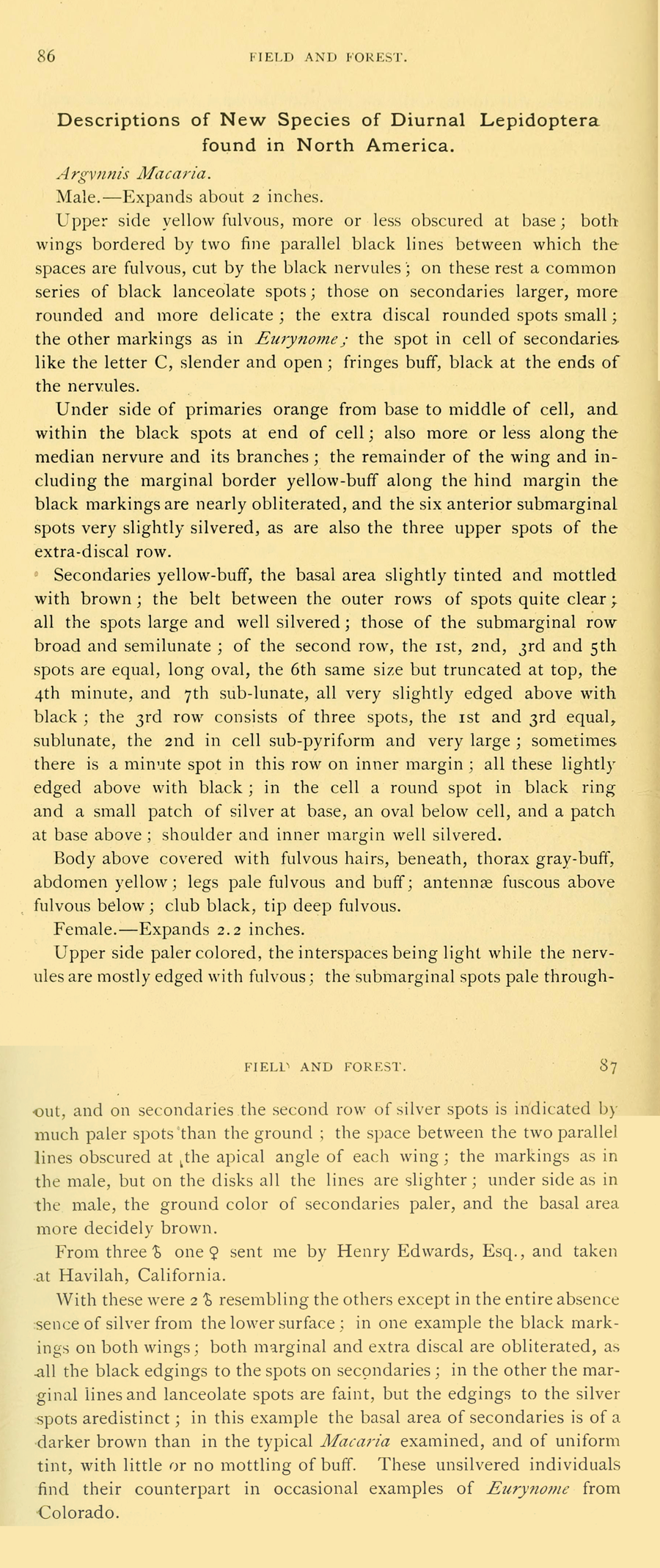Argynnis callippe macaria
Macaria Fritillary
I've seen these several times around Mt. Piños and in the Piutes in the summer months, avidly taking nectar from flower to flower. In the lower parts of southern California, we have a different callippe subspecies and a different coronis that may fly with or near it, and they are easy to tell apart. When I drive north to where these other populations fly, I have a hard time identifying the fritillaries. This one flies from late May to July (third week of July acc. to Ken Davenport). The coronis that flies with it in some areas - coronis hennei - flies from June into September, and in smaller numbers.
As described by the Emmels (1973), the ventral side of the wings have moderately size silvered spots against "a very light-yellow-buff" ground color, and there is a "red suffusion" at the base of the forewing.
Argynnis callippe macaria was flying along the Piute Mountain Road on July 9, 2017. None that I saw were very fresh.
Same place/day as above.
Another Argynnis callippe macaria on the same dirt (and rock) road in the Piutes south of Lake Isabella. These were approximately 6-7 miles in from the west road terminus.
Argynnis callippe macaria from Mt. Piños on July 2, 2007. This hike was in new territory for me - thanks to Bill Gendron for the identifications.
Same day. A pair of Argynnis callippe macaria.
Ventral of Argynnis callippe macaria. These can fly side-by-side at times with a similar coronis fritillary (ssp. hennei) that I'm not easily able to distinguish. Ken Davenport says this happens often, but some people really have a knack for identifying these.
William Henry Edwards described this butterfly from specimens collected by Henry Edwards at Havilah, in Kern County. It was published in an 1877 issue of Field and Forest.
©Dennis Walker
